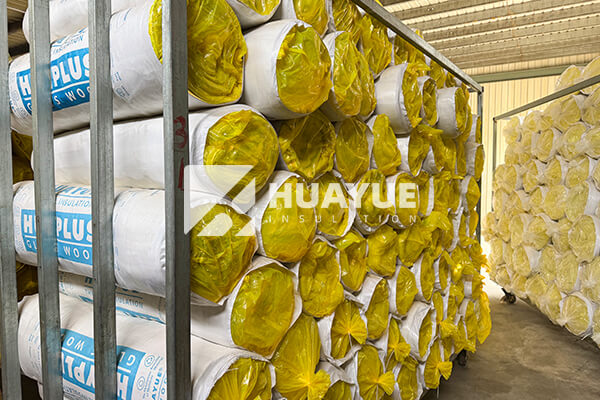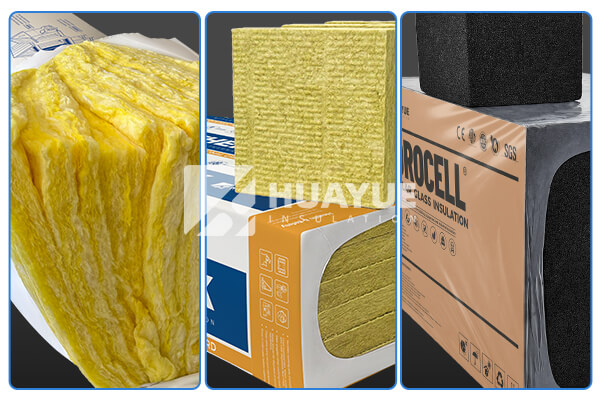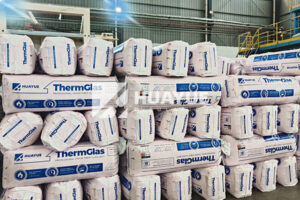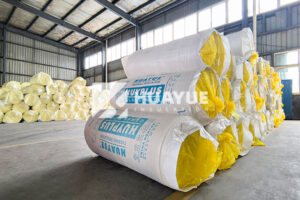Fiberglass Insulation For Roof: Is It The Best Choice For Your Home Or Project?
Many people struggle with keeping their buildings comfortable in every season. The wrong roof insulation means higher bills, uneven temperatures, and safety risks.
Fiberglass insulation is one of the most reliable and cost-effective roof insulation options. It provides excellent heat resistance and fire safety. Properly installed fiberglass batt keeps a home cozy while lowering energy expenses.

Choosing the right insulation means long-term results. If you want reliable protection against heat loss and moisture, keep reading. I will break down all your options and give you answers you can trust.
Why Fiberglass Batt Reigns As The Best Insulation For Roof?
Homeowners and engineers worry about insulation that wears down or traps moisture. Quality insulation solves these problems and prevents expensive maintenance.
Fiberglass batt insulation stands out as the best because it combines fire resistance, non-toxic materials, and top performance in heat retention. It installs easily and remains stable for decades with minimal maintenance.

I have seen many insulation materials used in projects over the years. Fiberglass batt keeps showing up as the number one choice because of how it stops air leaks, slows down heat transfer, and resists mold. It is typically manufactured in large sheets or rolls, making installation quick. Engineers and plant managers like me notice that fiberglass batt does not compress easily. This means it keeps its R-value for years. It does not absorb water, so it resists corrosion under insulation. This is important for metal roofs and tank systems in harsh weather.
Fire safety is critical for industrial tanks and residential applications. Fiberglass batt scores high on this front; it does not burn in normal fire conditions and meets strict safety codes. I also see that the cost per square meter is lower compared to many alternatives, which lets builders and homeowners stick to budgets. Below is a summary of the features that matter most:
| Feature | Rating | Explanation |
|---|---|---|
| Fire Resistance | Excellent | Non-combustible |
| Heat Retention (R-value) | High | Consistent over life span |
| Ease of Installation | Simple | Pre-cut batts fit standard spaces |
| Water Absorption | Very low | Prevents CUI and mold growth |
| Cost Effectiveness | High | Lower material and labor expenses |
| Longevity | Decades | Resists wear and compression |
Fiberglass batt keeps delivering results in every project I take on. People who install it notice improved comfort, lower bills, and peace of mind.
Alternatives To Fiberglass Batt?
Some people want different insulation for roofs. They compare options for cost, eco-friendliness, and durability.
Other than fiberglass batt, the main roof insulation alternatives are mineral wool, spray foam, and foam glass. Each option has unique properties and drawbacks.

I have used all three alternatives in various projects. Mineral wool works well in high-temperature environments and resists fire, but it is heavier and sometimes pricier. Spray foam creates an air-tight seal but demands skilled installation and may release fumes during curing. Foam glass is excellent for tanks and applications needing chemical resistance, but costs more upfront and may need extra support for large spaces.
Here is a table breaking down these options:
| Material | R-Value | Fire Resistance | Water Absorption | Eco-Friendliness | Installation Cost |
|---|---|---|---|---|---|
| Fiberglass Batt | 2.2-3.8/inch | Excellent | Very low | Good | Low |
| Mineral Wool | 3.0-3.3/inch | Very good | Low | Moderate | Moderate |
| Spray Foam | 6-7/inch | Moderate | Low | Mixed | High |
| Foam Glass | 2.7-3.4/inch | Excellent | None | Excellent | High |
When choosing an alternative, think about fire codes, climate, local materials, and your budget. For most roofs, fiberglass batt comes out ahead unless you have unique needs, like chemical resistance.
Cellulose Eco Friendly Insulation For Roof?
Sustainable builders and eco-conscious homeowners often ask about green insulation materials. Cellulose is a top choice for those wanting an eco-friendly solution.
Cellulose insulation uses recycled paper products, making it one of the most sustainable roof insulation options. It resists pests and molds when properly treated.
I like how cellulose insulation supports waste reduction and lessens environmental impact. Treated with borates, it keeps insects and mold away. Installers blow the insulation into roof cavities, filling gaps well. The downside I see is cellulose can absorb water over time, so it may need moisture control in wet climates. Its fire resistance is good but not as strong as fiberglass or mineral wool. Here is a direct comparison:
| Property | Cellulose | Fiberglass Batt |
|---|---|---|
| Eco-Friendliness | Excellent | Good |
| Fire Resistance | Good | Excellent |
| R-Value per Inch | 3.2-3.8 | 2.2-3.8 |
| Moisture Risks | Moderate | Very low |
| Installation | Blown-In | Precut Batts |
For green projects, cellulose performs well when installed by experienced professionals. I always recommend checking local codes and using vapor barriers for safety.
What R rating do I need for roof insulation?
People want to know how much insulation their roof needs. R-value measures how well insulation resists heat flow. The right rating depends on climate and building use.
Most homes and industrial roofs need an R-value between R-30 and R-49. Colder climates need higher ratings. Warmer zones need moderate insulation.
I always start projects by checking the latest local building codes. For example, residential homes in northern Europe or northern U.S. usually require R-38 or higher. In milder climates, R-30 may be enough. For industrial tanks or critical roof systems, I suggest aiming higher for safety margins and energy efficiency. The table below shows general recommendations:
| Climate Zone | Minimum R-Value (Roof) |
|---|---|
| Cold (Northern) | R-38 – R-49 |
| Moderate (Central) | R-30 – R-38 |
| Warm (Southern) | R-30 |
| Industrial / Tanks | R-49+ |
Use these ratings as a baseline. I advise checking with a local expert before making a purchase.
How long does fibreglass roof insulation last?
People worry about how often they need to replace their roof insulation. The answer impacts budgeting and maintenance planning.
Fiberglass roof insulation typically lasts 20 to 30 years with proper installation and minimal water exposure. It remains effective for decades.
In my experience, the key to getting a long life from fiberglass batt is proper installation and moisture control. If the roof develops leaks, insulation may compress or get contaminated, lowering performance. Good fiberglass batts resist pests and mold, so they rarely need replacement unless damaged. Routine roof inspections and timely repairs keep fiberglass effective. In older buildings, I have seen insulation last more than 30 years. If energy bills start to climb or indoor comfort drops, it might be time to check the insulation and consider replacement. Below is a simple lifespan guide:
| Insulation Type | Typical Lifespan | Key Risks |
|---|---|---|
| Fiberglass Batt | 20-30 years | Compression, water |
| Cellulose | 15-20 years | Moisture, pests |
| Mineral Wool | 30+ years | Settling, water |
| Spray Foam | 20-30 years | Shrinkage, cracks |
If you manage your building well, fiberglass insulation gives dependable protection for decades.
Conclusion
Fiberglass insulation brings reliable performance, safety, and value for roof projects, making it the go-to choice for most building owners.
You may also be interested in:
Ready to Get Started?
Get in touch with our experts for personalized solutions tailored to your needs.
Get Free QuoteLatest Articles

Glass Wool Fire Rating: How Safe Is Your Insulation?
Dec 25, 2025
Let's Work Together
Ready to take your business to the next level? Get in touch with our team of experts and let's discuss how we can help you achieve your goals.
Get Free Solutions






